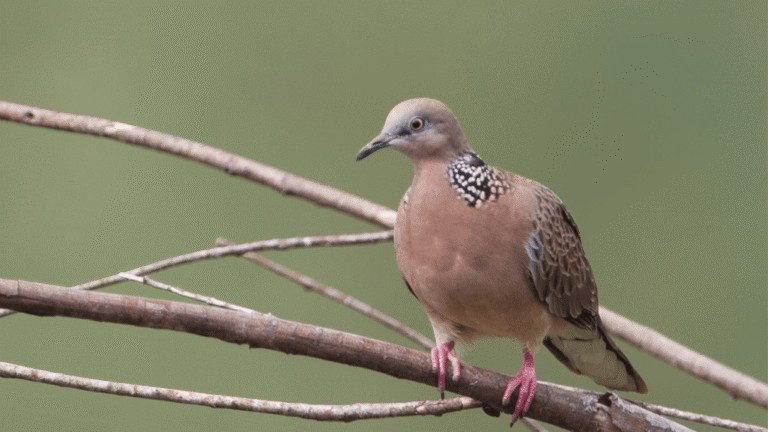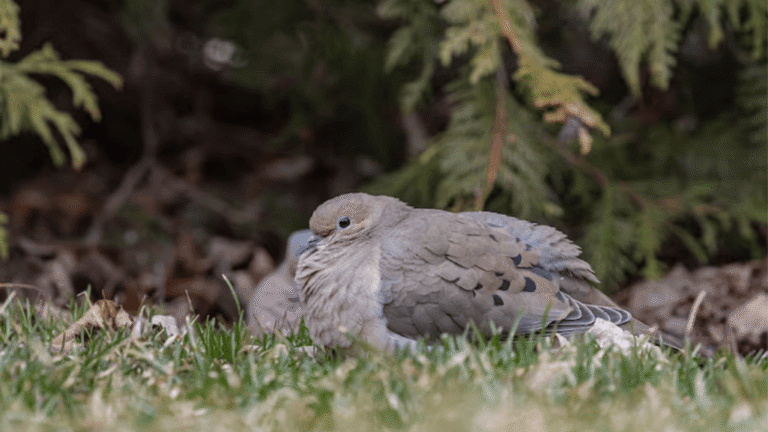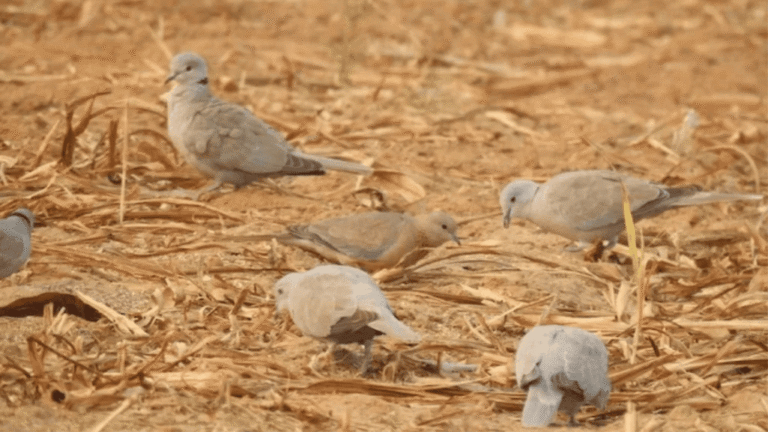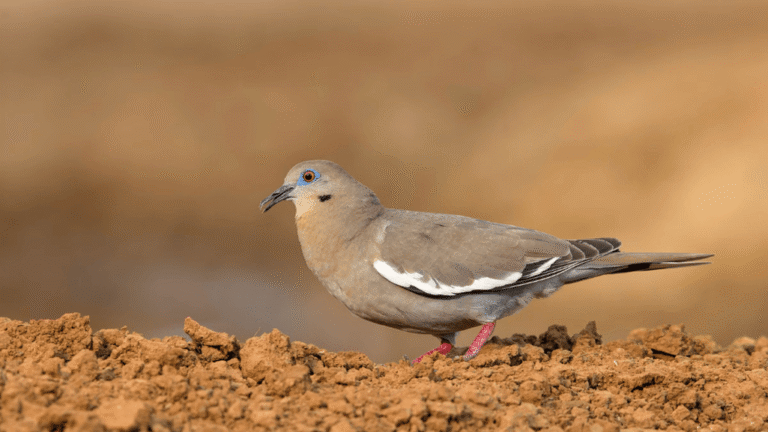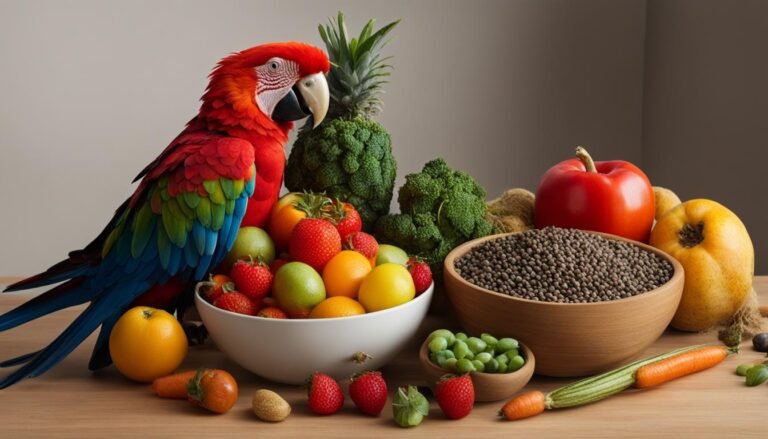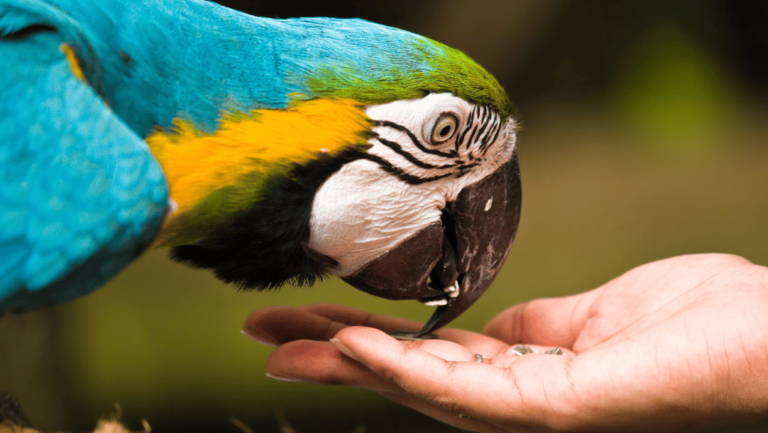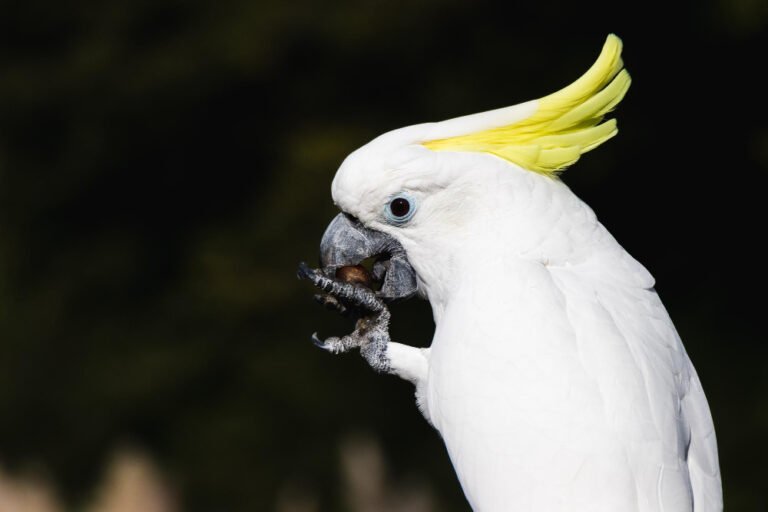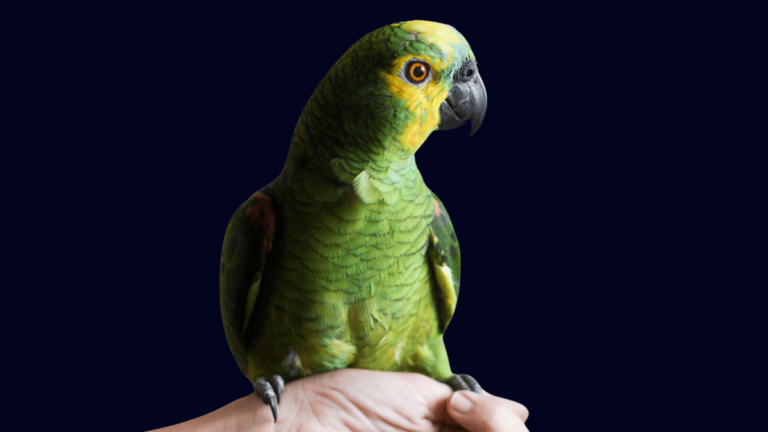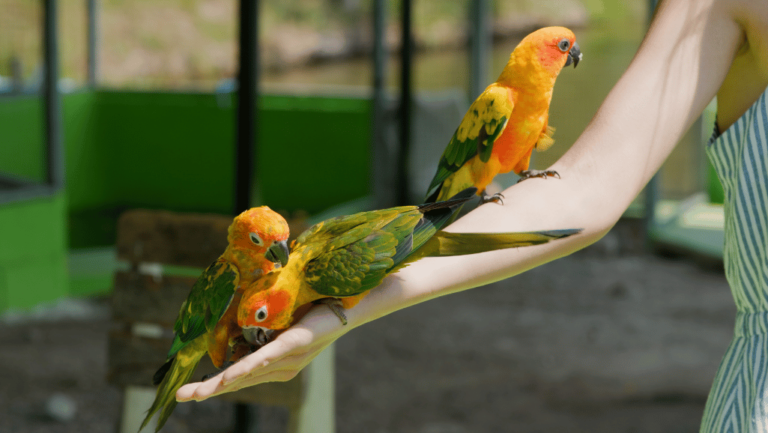Bird feeding and attracting birds is a popular pastime for many nature enthusiasts. However, it’s important to understand that bird diets change with the seasons, and making seasonal adjustments to our bird feeding strategies can have a significant impact on attracting a wide variety of birds to our yards.
In the fall, as the days get shorter and temperatures cool down, birds undergo a dietary shift. Their preferred foods transition from protein-rich insects to high-fat, sugar-rich foods. This change in diet helps birds build up their body weight and store extra fat as fuel for migration. Understanding these seasonal dietary changes can help us adjust our feeding strategies accordingly.
Key Takeaways:
- Bird diets change in the fall, transitioning from protein-rich insects to high-fat, sugar-rich foods.
- Providing natural foods like seeds, nuts, and fall fruits can attract a wide variety of birds to your yard.
- Contrary to the myth, feeding birds in the fall helps them prepare for migration and attracts passing-through and young birds.
- Recommended bird foods for the fall include sunflower seeds, nyjer seed, peanuts, suet, cracked corn, and nectar for hummingbirds and orioles.
- Understanding bird behavior during breeding season can help us provide the appropriate food sources to attract breeding birds.
Birds’ Favorite Fall Foods
In the autumn, birds have specific dietary preferences that can help attract them to your yard. Providing the right foods can create a haven for a diverse array of bird species. During this season, birds gravitate towards foods that are high in fat, sugar, and calories, helping them prepare for migration and survival during the winter months.
Some of the favorite fall foods for birds include:
- Seeds and grain from late-ripening grasses and flowers
- Nuts of all types
- Sugar-rich fall fruits
- Nectar from the last flowers blooming in autumn
By providing these natural foods in bird feeders, you can attract a wide variety of birds to your yard. The availability of these food sources serves as an invitation for birds to visit and explore the area. Birds will appreciate the abundance of their favorite fall foods, increasing the chances of repeat visits to your bird feeders.
To enhance the appeal of your bird feeders, consider offering non-GMO and organic options. These healthier alternatives can provide birds with nutritious and chemical-free nourishment, aligning with your eco-friendly and sustainable practices. By prioritizing non-GMO and organic options, you can not only attract birds but also contribute to their overall well-being.
Remember, the key to attracting birds in the fall is to mimic their natural food sources. Providing a variety of options that cater to their preferences will ensure a thriving bird population in your yard.
| Fall Foods | Benefits |
|---|---|
| Seeds and grain from late-ripening grasses and flowers | High in fat and calories, provide essential nutrients |
| Nuts | Rich source of fats and proteins |
| Sugar-rich fall fruits | Quick energy source, high in vitamins |
| Nectar from autumn flowers | High sugar content, important for migrating species |
Offering these fall foods in your yard can help create a welcoming environment for birds. By embracing their preferred diet, you can enjoy the beauty and presence of birds as they visit and indulge in the nourishing offerings of your bird feeders.
Autumn Eating Behaviors
In the fall, migratory birds exhibit hyperphagia, an increased appetite that compels them to overeat and gain weight. This weight gain is essential for their long migration journeys. Non-migratory birds, on the other hand, start caching food to store it for the winter. They hide seeds in crevices or bury them in the ground to ensure a steady food supply. This foraging simulation ensures that non-migratory birds have enough food to sustain themselves during the colder months.
Foraging Techniques
- Caching seeds in hidden spots
- Burying food items for later retrieval
Migratory birds, such as warblers and flycatchers, take advantage of the bountiful food sources available during fall and engage in intense feeding to fuel their long flights. They rely on the abundance of high-energy foods such as insects, fruits, and nectar. Their instinctive behavior of overeating prepares their bodies for the demanding migration process. On the other hand, resident birds, including chickadees and jays, adapt to the changing season by creating food stores for winter survival through caching techniques.
Migratory birds exhibit hyperphagia, consuming as much food as possible to build up fat reserves for their journey. Non-migratory birds store food for the winter season.
Understanding these autumn eating behaviors can provide valuable insights for bird enthusiasts who want to attract and support bird populations in their yards. By offering a variety of food sources, including seeds, suet, and fruits, and by creating a bird-friendly habitat that mimics natural foraging conditions, bird feeders can encourage a diverse range of bird species to visit and find sustenance in their gardens.
| Migratory Birds | Non-Migratory Birds |
|---|---|
| Engage in hyperphagia | Store food through caching |
| Overeat to build fat reserves for migration | Create hidden food stores for winter survival |
| Rely on high-energy foods | Depend on stored food during leaner winter months |
Feeding Birds in the Fall

Contrary to the myth that feeding birds in the fall will keep them from migrating, providing the right foods actually helps birds prepare for their migration journeys. Feeding birds also teaches them that your yard offers a reliable food supply, attracting both passing-through birds and young birds. To ensure a plentiful food supply, switch to larger feeders, leave natural foods intact in the yard, and provide fresh and full bird baths.
The fall is a crucial time for birds as they prepare for their long and arduous migration journeys. By offering them a reliable food source in your yard, you can assist them in building up the necessary fat reserves for their travels. Additionally, providing food in the fall teaches birds that your yard is a reliable feeding location, encouraging them to return in the future.
One way to accommodate the increased number of birds visiting your yard in the fall is to switch to larger feeders. These feeders can accommodate more birds at once and provide space for different types of foods. Consider using feeders with multiple perches and feeding stations to accommodate a variety of bird species.
It is also crucial to leave natural food sources intact in your yard during the fall. Many birds rely on the seeds and fruits of native plants and trees, such as sunflowers, coneflowers, and dogwood berries. By allowing these plants to produce their natural food sources, you create a diverse and nutritious feeding ground for birds. Additionally, leaving fallen leaves on the ground can provide a foraging area for birds seeking insects and other invertebrates.
A fresh and full bird bath is another essential element for attracting birds in the fall. Birds require water not only for drinking but also for bathing, which helps them maintain their feathers’ health and insulation properties. Providing a clean bird bath with freshwater not only attracts birds but also supports their overall well-being.
It’s important to note that different bird species have varying dietary preferences, so offering a variety of foods can attract a wider range of birds to your yard. For example, offering sunflower seeds can attract finches and cardinals, while providing suet can entice woodpeckers and nuthatches. It’s always a good idea to research the specific foods preferred by the birds in your area.
By making these simple seasonal adjustments to your bird feeding strategies, you can create a welcoming environment for both migratory and resident birds in the fall. Enjoy the beauty and diversity of birds as they visit your yard and benefit from the nourishment you provide.
The Best Foods to Offer Birds in Autumn
In addition to natural foods, offering specific types of bird seeds can attract a wide variety of birds to your yard in the fall. Some recommended options include:
- Sunflower seeds
- Nyjer seed
- Peanuts and peanut butter
- Suet
- Cracked corn
- Nectar for hummingbirds and orioles
Consider providing non-GMO and organic seeds for a healthier food option for the birds.
| Bird Seed Types | Benefits |
|---|---|
| Sunflower seeds | High in fat and protein, attract a wide variety of seed-eating birds |
| Nyjer seed | Preferred by finches and goldfinches, high in oil content |
| Peanuts and peanut butter | Rich in protein and fat, loved by woodpeckers, jays, and chickadees |
| Suet | High energy food, appreciated by woodpeckers, nuthatches, and jays |
| Cracked corn | Attracts ground-feeding birds like sparrows, juncos, and doves |
| Nectar | For hummingbirds and orioles, provide a sugar-rich energy source |
Bird Behavior in Breeding Season
During the breeding season, birds exhibit fascinating behaviors to ensure the well-being of their young. Understanding these behaviors can help birders attract breeding birds to their yards.
To ensure sufficient food for their growing families, birds establish breeding territories. The size of these territories varies depending on the bird’s size, with larger birds requiring larger areas. By providing suitable habitats and an abundant food supply, birders can attract breeding birds and witness their delightful antics.
In the warmer weather of the breeding season, birds often switch their diets from seeds to insects. This dietary change is due to the availability of an abundance of flowers and an increase in insect populations. By offering a variety of food sources, birders can cater to the changing preferences of breeding birds.
“Breeding territories are crucial for birds to secure enough food for their growing families.”
Nurturing Breeding Birds: Food Recommendations
Providing the right foods during the breeding season can support the health and well-being of breeding birds and their offspring. Consider offering the following food options:
- Insects: Incorporate insects into your yard by maintaining native plants that attract them. This will provide breeding birds with a natural and nutritious food source.
- Suet: Hang suet feeders filled with high-energy suet cakes. These are a favorite among breeding birds, offering a quick and convenient source of protein and fat.
- Fruit: Place fresh, ripe fruits such as berries, apples, or oranges in bird feeders or on feeding platforms. These fruits provide essential vitamins for breeding birds.
By understanding and catering to the unique feeding behaviors of breeding birds, birders can create an inviting and supportive environment that attracts a diverse range of species during this special time of year.
Breeding Bird Food Preferences
| Bird Species | Food Preferences |
|---|---|
| American Robin | Insects, berries, fruits |
| Eastern Bluebird | Insects, mealworms, berries |
| House Finch | Seeds, insects, fruit |
| Chickadee | Insects, suet, seeds |
| Northern Cardinal | Seeds, fruits, insects |
Conclusion
Understanding the seasonal feeding habits of birds is crucial when it comes to attracting and providing for them throughout the year. By making appropriate adjustments to our feeding strategies, we can create a welcoming environment that entices birds to visit our yards consistently.
To attract a diverse array of bird species, it is essential to provide the right foods. Offering a variety of seeds, nuts, fruits, and nectar can attract different types of birds to our feeders and yards. Consider providing non-GMO and organic options to prioritize the birds’ health and well-being.
In addition to providing the right foods, ensuring a reliable food supply is equally important. By switching to larger feeders, leaving natural foods intact in the yard, and maintaining fresh and full bird baths, we can create a habitat that birds find appealing and sustainable.
As we prioritize bird feeding and attracting birds, let’s not forget to appreciate the beauty and wonder of these feathered visitors. Take a moment to cherish their presence and observe as they thrive in the environment we have created for them.
FAQ
Do birds eat differently in the fall compared to other seasons?
Yes, birds’ diets change in the fall as they transition from protein-rich insects to high-fat, sugar-rich foods. This change in diet helps birds build up their body weight and store extra fat as fuel for migration.
What kinds of foods do birds prefer in the autumn?
Birds in the fall prefer foods that are high in fat, sugar, and calories. These include seeds and grain from late-ripening grasses and flowers, nuts, fall fruits rich in sugars, and nectar from the last flowers blooming in autumn.
Why should I consider offering non-GMO and organic bird food options?
Offering non-GMO and organic bird food can be appealing to birds and provide a healthier food option. It ensures that the food is free from genetically modified organisms and pesticides, which can be harmful to birds and the environment.
Do birds eat more in the fall?
Yes, migratory birds exhibit hyperphagia in the fall, an increased appetite that compels them to overeat and gain weight. This weight gain is essential for their long migration journeys. Non-migratory birds, on the other hand, start caching food to store it for the winter.
Will feeding birds in the fall prevent them from migrating?
No, feeding birds in the fall actually helps them prepare for their migration journeys. It teaches them that your yard offers a reliable food supply, attracting both passing-through birds and young birds.
What types of bird seeds are recommended for attracting birds in the fall?
Recommended bird seeds for attracting birds in the fall include sunflower seeds, nyjer seed, peanuts and peanut butter, suet, cracked corn, and nectar for hummingbirds and orioles.
Why is it important to understand bird behavior during breeding season when feeding birds?
Understanding bird behavior during breeding season can help birders provide the appropriate food sources to attract breeding birds. Birds establish breeding territories and may switch their diet from seeds to insects as warmer weather brings an abundance of flowers and insects.





